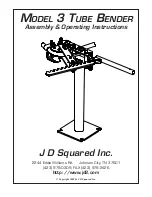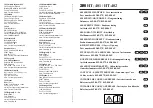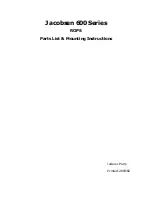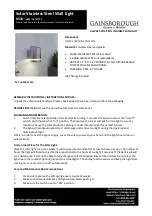
Strobe Light
6 - 1
User Manual
6
Limitations of Remote Optical Sensors
Remote Optical Sensors (ROS) have a slight limitation
when used with the Strobe Light because they sense
not only the reflective marker but the strobe flash as
well. If the ROS is positioned near the strobe, the light
from the strobe may cause the ROS to trigger the
stroboscope at the wrong time, especially when using
a delayed flash mode. The Strobe Light has an
Input
Blanking
feature to allow it to ignore this false
trigger.
Even with the Input Blanking, large delays cannot be
obtained using an ROS if the strobe’s flash is
triggering the ROS. The duration of the ROS pulse in
response to the strobe’s flash is about 0.5
milliseconds to 1.1 milliseconds depending on the
flash rate. This limits the largest delay possible
because the flash swamps the signal from the ROS,
and consequently it will not provide the pulse from the
reflective marker. If large delays are desired,
reposition the ROS so it is away from the strobe’s
direct flash or use a magnetic sensor. Moving the
ROS 6 to 12 inches will help.
The Input Blanking feature itself limits the maximum
delay, which is detrimental to non-optical sensors. It
is possible to disable (or enable) the blanking in the
Strobe Light.
¾
Reference
Chapter 3 – Menu
, for
details.
Содержание CMSS6165
Страница 4: ......
Страница 10: ......
Страница 19: ...Introduction to the SKF Strobe Light Display Panel Definition of Buttons Strobe Light 1 7 User Manual ...
Страница 20: ......
Страница 24: ......
Страница 48: ......
Страница 52: ......
Страница 61: ...Specifications General Strobe Light 9 5 User Manual ...
Страница 62: ......
















































